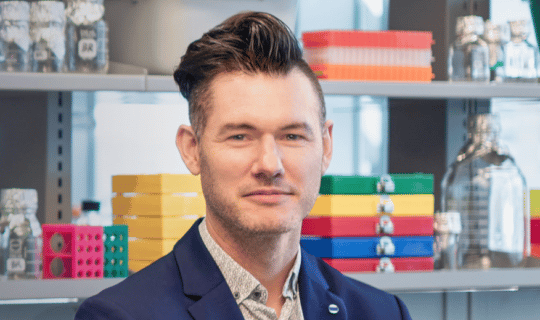
Assistant Professor Shane Liddelow
NYU Grossman School of Medicine
- 10:00
- Zoom details to be circulated via email on seminar day,
- Dr Julien Legrand & Dr Samuel Crossman
What Do Reactive Astrocytes (really) Do?
Abstract
The study of astrocyte reactivity requires careful identification of heterogeneity via transcriptomic profiling, followed by validation using cell-based systems to model their functional alterations compared to physiologically ‘normal’ astrocytes. Further validation by confirmation in rodent models of disease and in human cells and postmortem tissue provides corroboration of biologically important reactive astrocyte sub-states.
We recently completed a large well-powered scRNAseq analysis of astrocyte reactivity profiles following acute systemic inflammation, highlighting several transcriptomically defined sub- states. Further, using integration with other published datasets we find specific disease- associated sub-states in rodent models of Alzheimer’s disease, demyelination, and an acute stab wound. Following, we produced in vitro models to further study the functional alterations of these substates of reactive astrocytes, and used snRNASeq from human post-mortem Alzheimer’s disease patients for cross-specific integration.
In parallel studies, we have used several animal models of neurodegeneration: the bead occlusion model of glaucoma, the SOD1G93A model of amyotrophic lateral sclerosis, and the APP/PS1 mouse model of amyloidosis to highlight three key insights. First, we report that neurons must be susceptible to astrocyte-mediated cell death; second, disease associated mutations alone may not mediate reactivity states, but instead lower their threshold for ‘activation’; and finally, that reactive astrocyte sub-state heterogeneity is dependent on spatial location and most often localizes with common sub-states localizing with seemingly disparate disease pathologies. Combined these studies highlight the importance of functional validation of transcriptomic ally defined reactive astrocyte sub-states, and identify a specific set of stop-gaps in the mechanism of reactive astrocyte mediated neurotoxicity.
Bio
Shane is an assistant professor in the Neuroscience Institute at NYU Grossman School of Medicine, with appointments in the Departments of Neuroscience & Physiology and Ophthalmology. In 2021 he was appointed as co-Director of the Parekh Center for Interdisciplinary Neurology and Grossman School of Medicine. His lab researches mechanisms that induce different forms of reactive astrocytes, and investigates how they interact with other cells in the central nervous system in a positive or negative way. He believes that the discovery of astrocytes with different reactive states has important implications for the development of new therapies for brain injury and diseases.
